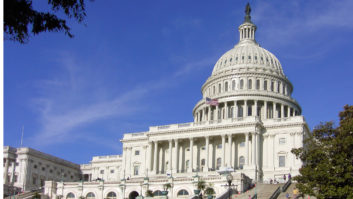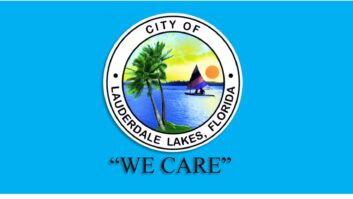This is the text of a statement by NAB President/CEO Eddie Fritts to the U.S. Senate Commerce Committee on Jan. 30.
NAB represents America’s free, over-the-air radio and television stations. Today, there are nearly 4,000 separate owners of the 13,000 local radio stations that serve America’s listeners. I’m pleased to testify on their behalf.
While the industry continues to change, one thing has remained constant: radio’s commitment to serving local communities. This attribute distinguishes us from all competitors – from online music to satellite radio – local service to the community is that which separates us from our competition.
Radio broadcasters are proud of their commitment to localism. A recent NAB study found that in 2001 alone radio stations contributed $7 billion worth of public service to their communities. That number includes the value of public service announcements, as well as monies raised for charities, disaster relief and the needy.
While this is an impressive figure, it does not tell the whole story. Radio’s local connection allows it to offer services that cannot be measured in just dollars and cents. For example, the AMBER Alert has been able to return over 40 abducted children to their families largely due to radio. How can one put a price tag on successes like that?
Radio underscored its value in helping solve the D.C. sniper case. After hearing the vehicle description and tag number on the radio, a listener called authorities resulting in the suspects’ immediate arrest.
And no dollar figure can account for radio’s work following the events of 9/11. Stations across the country raised donations for rescue equipment and victims, organized blood drives and overall, reassured and informed Americans during that dark time.
These, of course, are just a few examples, and I could go on.
Today, the industry has rebounded financially but, just 10 years ago, 60 percent of stations were losing money. Many stations had gone off the air, depriving communities of the local service upon which they had come to rely.
It was in that state of affairs that the Congress and the FCC revised radio ownership rules. NAB believes the limits implemented through the 1996 Telecommunications Act enabled radio to better serve local audiences across the country as well as strengthening the industry economically.
As radio deregulation has moved forward, radio’s critics have tended to overstate the effects of industry trends. Compared to other entertainment choices, radio is perhaps the least consolidated sector. The Hollywood movie studios, the record companies, direct broadcast satellite, cable systems, newspapers – even the Internet – all have more of their revenue share concentrated among the top ten owners than does radio.
Of course, radio’s diversity is not measured by revenue shares.
Radio broadcasters recognize the importance of diversity. Chairman McCain has offered a proposal to foster greater ownership diversity through tax deferrals. We look forward to working with the chairman, the committee and the entire Senate in seeing that this important legislation moves forward.
Already, today, radio’s formats mirror the diversities in American society. Spanish language formats have increased by over 80 percent in the last decade and other ethnicities are well represented on the dial, from Persian to Polish to Chinese to Haitian. The list goes on and on.
Radio also remains the most trusted source for music. According to Arbitron, two-thirds of Americans say that radio is where they turn first for new music. Ninety-five percent of Americans listen to radio weekly. Our listeners have good reason for tuning in: last year alone, radio debuted 3,000 new songs and over 550 new artists.
In sum, Mr. Chairman, the Telecommunications Act has been a success for our listeners. And what’s good for our listeners is good for our industry.
It was a goal of Congress when formulating the Act to keep radio a viable, vibrant and local medium. That objective has been met. Radio today is more financially stable. Radio’s programming is as diverse as its audience. Today, radio remains the ultimate local, community medium. We look forward to continuing that proud tradition into the future.







